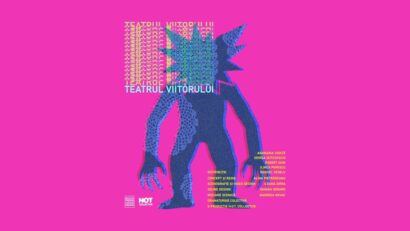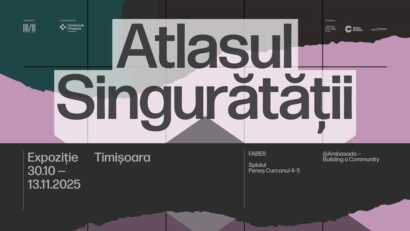Culture in the post-COVID-19 era
Standards and practices in the online culture

Monica Chiorpec, 29.08.2020, 13:00
The field of culture has also been affected by the crisis caused by the new COVID-19 pandemic. The money earmarked for the cultural sector was tight; small wonder then that the recent crisis aggravated the problems cultural institutions, be they public or private, or independent artists, are faced with. No less important is the dwindling presence of the public in any type of cultural manifestation. All throughout the officially imposed lockdown, cultural institutions have tried to maintain the connection with the public via the Internet, exclusively. However, such an unprecedented challenge has been testing cultural strategies in critical circumstances, but also the publics interest for cultural events. It appears, then, that the fund-drawing competition is mainly ongoing between the public and the independent environment. To that end, the National Institute for Cultural Research and Training has recently staged a debate. Anda Becut Marinescu is research director with the aforementioned Institute, and here are the details she gave during the debate.
Anda Becut Marinescu:
“We all need to bear in mind that competition should also be ongoing when it comes to drawing the public, as the public at large has been affected already because of the level of the cultural practices proper, which is low, anyway. What is going to happen next, that greatly depends on the level of trust people will have in institutions, as well as in the messages and the offer made by public cultural institutions and the private organisations alike.”
Also, risk management should be a must in the strategy kit of any cultural institution or organisation, or at least thats what Anda Becuţ Marinescu thinks. In the past months, that has been demonstrated by a kind of reality few people expected it existed.
Anda Becut Marinescu:
“A key issue is also the way people perceive risk. Awareness should be raised regarding that kind of risk, that including cultural organisations. It is not only the public that has been excluded, but also the professionals activating in the field of culture. Obviously, the quality of the artistic act has been rethought from the perspective of that kind of risk we have all been confronted with.”.
In all likelihood, it is the quality of the cultural act that will mobilise the public and will yet again bring this field to everyone attention, a field which is indispensable in any modern society. Exclusively distributed in the virtual environment as it may be, the cultural content will have to adapt to the demands of various cultural communities, at once maintaining the high standards that are required.
Anda Becuţ Marinescu:
“Attention, in the coming period, should be focused on the quality of the artistic act, on the quality of the content. Latterly, we have been witnessing an over-production of online cultural contents, of which some were not of the best quality. There is an ongoing competition at global level. Likewise, the way we assume the community is just as important, which includes physical proximity, but also the taste and preferences communities created in the online environment”.
Irina Cios is the director of the National Cultural Fund Administration. Ms Cios views the COVID-19 crisis as an opportunity for the cultural sphere. To a certain extent, events in the past months have brought to everyones attention the important problems culture is faced with, in Romania.
Irina Cios:
“The virus, for us all, is actually an extraordinary opportunity. I think it is for the first time in history when in Romania, people speak about culture publicly as well as at the central level. It is for the first time ever when real steps have been taken on the path of supporting this sector and initiating a systemic reflection process. Perhaps we should take such an opportunity seriously, we should sit down and sum up, and see what we can do for the famous cultural strategy, what the steps we need to take are, in order to promote the concept of culture and the level of general mentality.”
The lockdown caused a decrease in cultural consumption, yet the figures statistics have pointed to were worrying even at the time when cultural activity was normal, when all around Europe, everybody had access to a cultural event. In Europe, Romania lies at the bottom of the table according to a ranking of the participation in a cultural act. Tudor Andrei is the director of Romanias National Statistics Institute.
Tudor Andrei:
“How mobile Romanias population is, from a cultural point of view, we can see that if we look at several percentages, bluntly compared to percentages reported for other European countries. There is a very important percentage which reveals what social mobility for Romanias population means and which measures the participation in cultural activities. A meager 30% of Romanias population takes part in at least one cultural activity over the course of a year. In France, more than 75% of the population participated in at least one cultural event over the course of a year. The average percentage at European level stands at more than 60%.”
Statistics point to a dismal situation, which, according to Irina Cios, has its explanation.
Irina Cios:
“That happens because, since early childhood, the population of France is taught that, in order to attain spiritual and human fulfillment, a cultural component is needed to achieve that. Children are taken to museums, they are put on creative courses and workshops. That is deeply-ingrained in their genes and is perpetuated, irrespective of those peoples career option for the future.”
Consistent and constant financing, as well as drawing the public to culture is likely to save, for the future, cultural institutions and artists alike, as well as peoples personal development. According to specialists, Romania should follow the European trends, with the purpose of reforming a sector that for so many years has been left behind.
(Translation by Eugen Nasta)






























